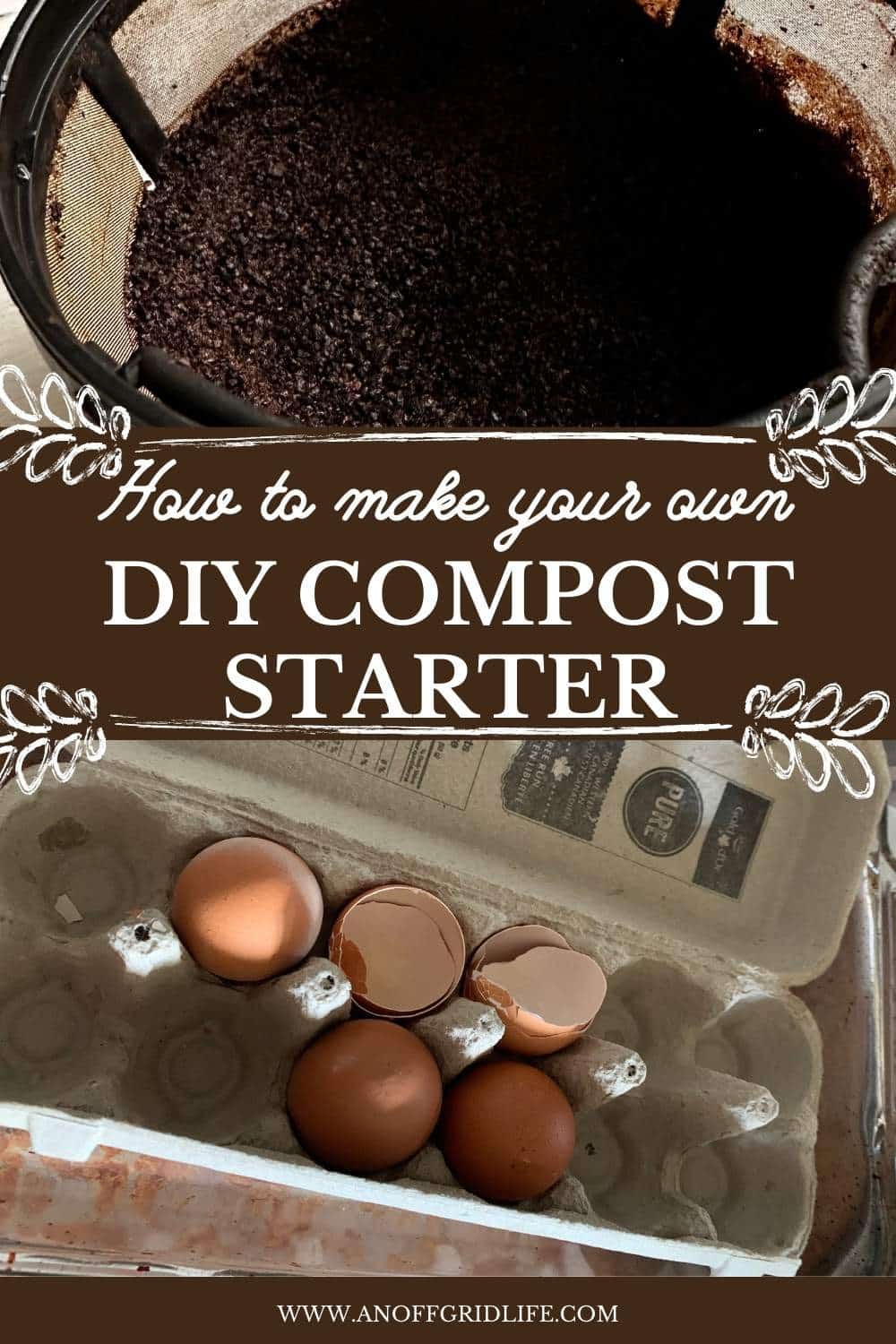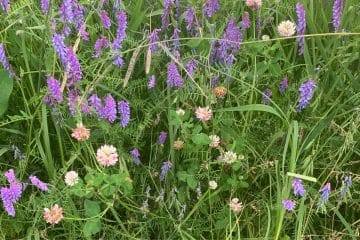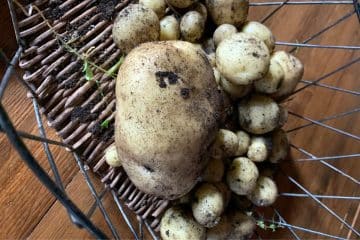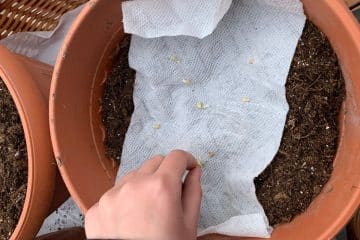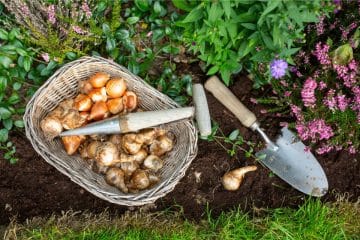Ever wonder how to turn your pile of kitchen scraps into a nutrient-rich, garden-enhancing powerhouse? The secret lies in making your very own DIY compost starter.

Here's how to make an effective compost starter using everyday household waste and organic materials.
Understanding Compost Starter DIY
When I left the Toronto suburbs for a life off the grid in a remote area of northern Canada, I had to get used to minimizing our waste. No more curbside garbage pickup, no more convenient brown bags to collect garden waste, And definitely no more leaving food scraps in our outdoor garbage bin. That's just way too attractive to bears.
So, I started researching composting, including hot composting and the best compost starters. Creating a DIY compost starter is more straightforward than it might seem. With the right ingredients and patience, you can kickstart your composting process at home, just like I did.
The Role of Bacteria and Fungi in Composting
Learning about composting is turning into a fun homeschool project with my two youngest children. Composting with kids is a great way to teach them how to minimize kitchen waste and the basics of chemistry.
We discovered that good bacteria and fungi play important roles in breaking down organic matter, such as food waste, into nutrient-rich humus soil. These microorganisms feed on dead leaves, kitchen scraps, grass clippings, and other organic materials.
For best results, use smaller pieces of organic matter and turn your pile occasionally with a garden fork to add oxygen, which speeds up the natural decomposition process.
Add Nitrogen to Your DIY Compost Starter
Nitrogen also plays a vital role in the composting process. It fuels heat buildup during decomposition, turning your backyard waste into valuable finished compost.
While rainwater provides nitrogen naturally, you can boost your compost heap with high-nitrogen sources like blood meal or coffee grounds. Note: making a starter pile can take longer if you're winter composting. Be patient!
Benefits of Compost Starters
Compost starters kickstart the decomposition process. They contain beneficial bacteria that break down organic matter into nutrient-rich humus.
Commercial vs. Homemade Compost Starters
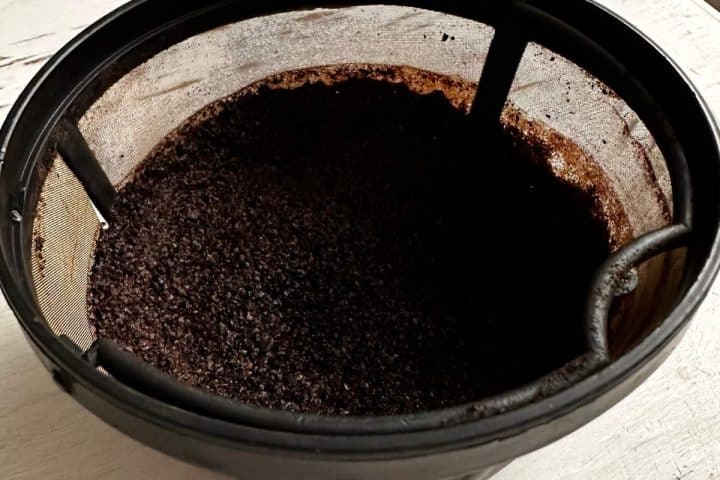
Commercial products are convenient but often unnecessary. You can make an effective homemade alternative with items you already have.
Balance wet materials like kitchen scraps (green materials) with dry materials like dead leaves (brown materials) to provide necessary carbon and nitrogen sources. Coffee grounds and beer can act as super hot compost activators due to their high nitrogen content, helping to boost nitrogen levels.
Making Your Compost Starter
Starting a compost pile doesn't need to be complicated or expensive. Here's a simple way to create your DIY compost starter with everyday household items.
The DIY Process
First, gather organic waste. Collect kitchen scraps like fruit peels, egg shells, vegetable waste (green materials), and yard waste like dry leaves (brown materials).
Next, build the compost heap. Combine these materials in a compost tumbler, DIY compost bin or a designated compost heap. Add warm water to the center of the pile until the heap is damp but not soaking.
Add natural accelerators to help your compost break down quicker. And remember to use coffee grounds or beer to boost microbial activity in your composting starter. These sugars feed microorganisms, speeding up decay and creating a healthy compost pile.
Finally, turn your mixture every few days with a shovel or pitchfork to distribute heat and promote faster breakdown. Then, sit back and watch Mother Nature do her job.
Key Ingredients for Effective Composting
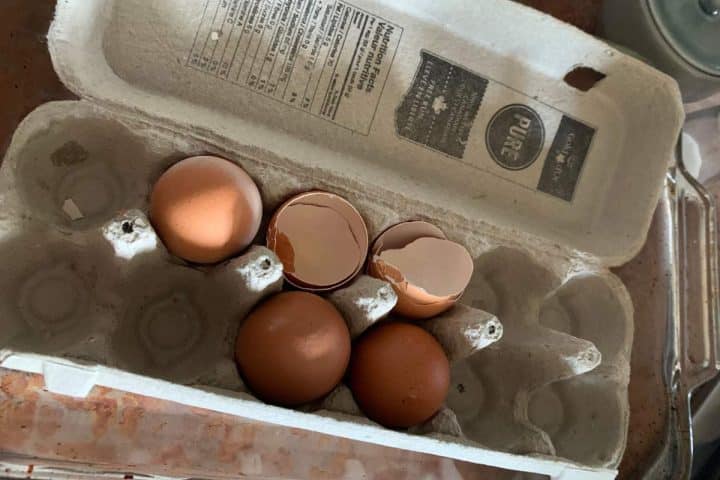
A healthy DIY compost pile includes a good ratio of various materials, including nitrogen-rich ingredients and beneficial microorganisms. Here's a quick rundown of materials.
Green and Brown Materials
Balance carbon-rich (brown) materials with nitrogen-rich (green) ones. Brown materials provide energy for microbes, while green materials fuel heat buildup during decomposition. Aim for a ratio of 30 parts browns to 1 part greens by weight.
Natural Nitrogen Boosters
Add fresh manure (we use chicken manure) or garden soil for an instant boost. These natural alternatives provide high nitrogen content and beneficial bacteria, aiding faster decomposition.
When to Use a Compost Starter
Introduce a homemade DIY compost starter during the early stages of composting when bacteria are most active. Add extra nitrogen sources like blood meal or chicken manure in colder weather or if your heap is slow to heat up.
Natural Alternatives for Commercial Compost Starters
Instead of commercial products, use fresh animal manure or garden soil. Horse or chicken manure acts as a super hot compost activator, while garden soil provides the necessary microbes for breaking down organic materials.
FAQs about DIY Compost Starter
Do you have questions about making your DIY compost starter? Here are some of the most common ones. If you don't see the answer you need, leave a comment, and I will do my best to find the answer.
What can you use as a compost starter?
To kickstart your compost pile, you can use coffee grounds, eggshells, fruit peels, or aged manure. Even beer and soda work well as natural compost activators.
How do you make a homemade compost accelerator?
Mix kitchen scraps like vegetable peelings, coffee grounds, and crushed eggshells. Add a bit of garden soil to introduce beneficial microbes.
What are the three parts you need to start composting?
To begin composting, gather green waste (nitrogen-rich materials), brown waste (carbon-rich materials), and water for moisture balance.
Creating your DIY compost starter is inexpensive, easy, and has many benefits. When you understand the key roles of bacteria, fungi, and nitrogen in composting, you can create a thriving compost pile from household waste and by balancing green and brown materials. Use the finished compost in your backyard gardening beds for thriving, healthy vegetables.
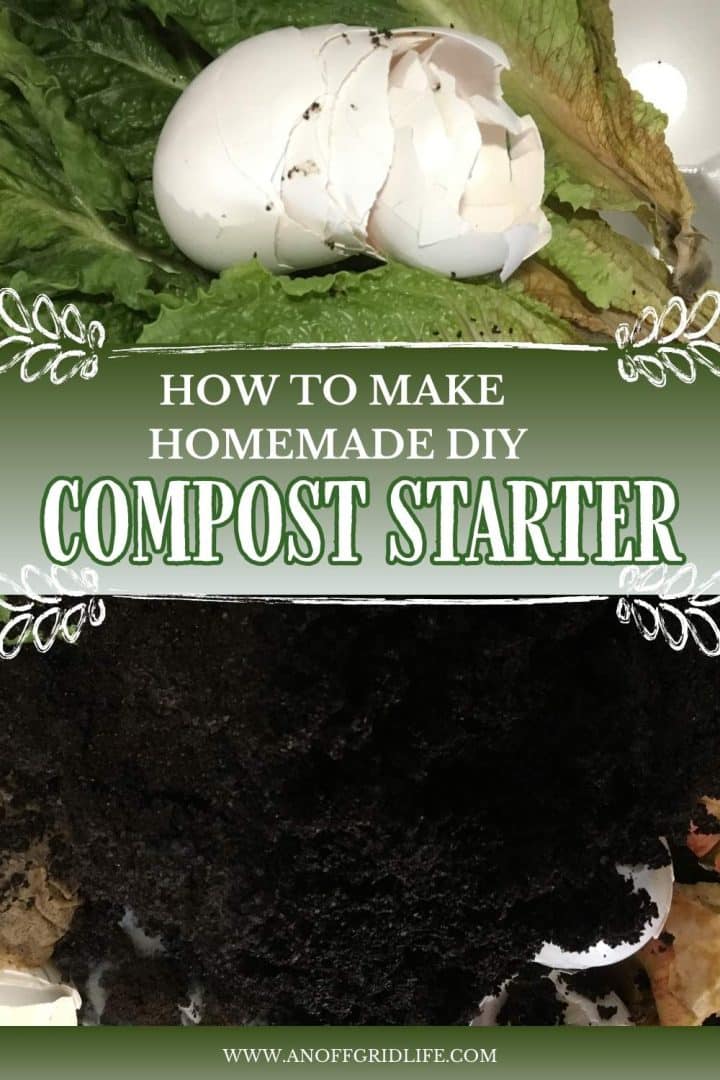

Sarita Harbour is a long-time freelance writer, blogger, and homesteader who has been creating online content for over 15 years. She’s the founder of An Off Grid Life, where she shares practical advice on self-reliance, homesteading, off-grid living, and homeschooling based on her 11-year adventure living in Canada’s remote Northwest Territories.

